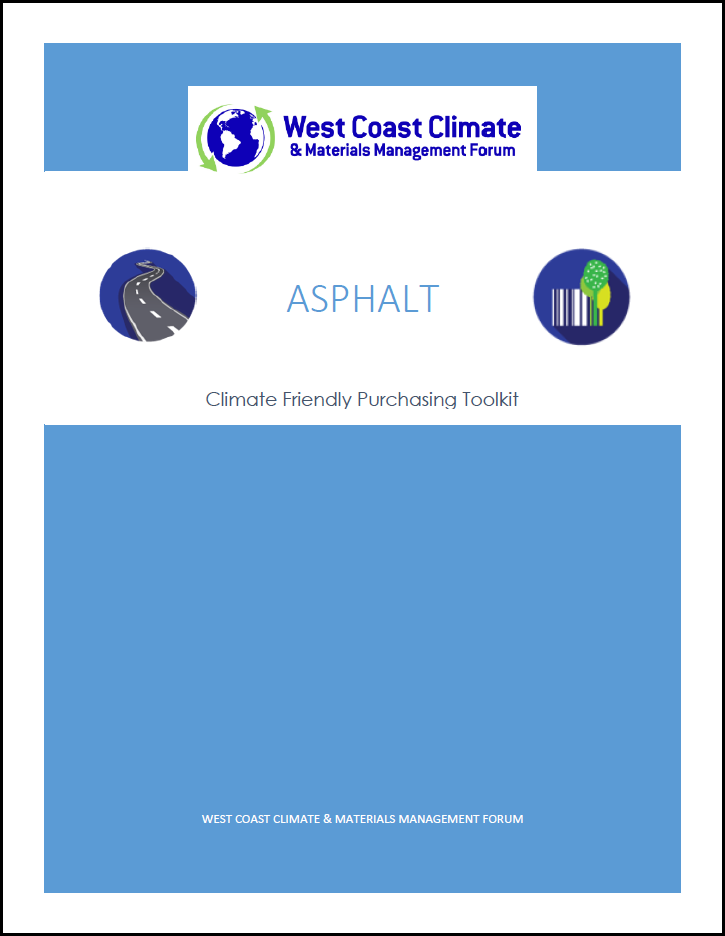This section of the Climate-Friendly Purchasing Toolkit is focused on two currently available and largely accepted measures for reducing GHG emissions from asphalt pavement production:
Why Asphalt Concrete Pavement?
Asphalt concrete is commonly used in road construction by state and local governments. It’s made up of roughly 95% aggregate, such as sand, gravel, and crushed rock, and 5% binder which is typically made of bitumen, a semi-solid form of petroleum. Hot mix asphalt concrete (HMAC) has been the standard for road surfacing and is widely used, understood, and well tested for performance and durability.
Sources of energy use and GHG emissions from asphalt production include:
- Crude oil extraction, transport, and refining for the asphalt binder
- Quarrying, hauling, crushing, and screening of aggregates
- Handling, storing, drying, mixing, and preparation of materials for installation.
- Transportation of the asphalt from the producer’s gate to the job site.
HMAC is an energy and GHG-intensive material and process because it requires heating the binder to between 300° and 350° Fahrenheit (F). There is also considerable energy used to extract and refine the petroleum-based binder. Therefore the immediate focus of GHG emissions reduction measures for asphalt concrete involves reducing the processing temperature and identifying lower-carbon binder substitutes.
GHG Comparisions
Figure 1 is a summary of greenhouse gas emissions and credits relative to baseline conditions (i.e. virgin materials) for various mixes using WMAC and RAP. As can be seen on Figure 2, Net emissions are lowest for those scenarios with the greatest percentages of recycled content. A pavement mixture using 30% RAP and warm-mix processing provides a 24% reduction compared to a mix using 100% virgin asphalt binder and hot-mix processing.
Figure 1: Comparison of GHG emissions for RAP / WMA (WMAC) asphalt mixes.
Figure 2: Difference in GHG intensity Virgin materials vs. RAP/WMA (WMAC) asphalt mixes.


.PNG)
.PNG)
.PNG)